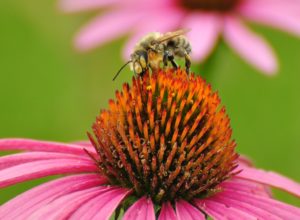Photography courtesy of Lowell Washburn, all rights reserved.
I just pulled my latest issue of TIME magazine out of the mail box. This week’s cover story is a piece titled: A World Without Bees. Written by Bryan Walsh, the article deals with the importance of bees to agriculture and focuses on the ongoing mystery of widespread Colony Collapse Disorder. According to Walsh, pollination by bees is responsible for one out of every three bites of food we consume each day. Bee pollination represents a $15 billion profit to American agriculture each year. Bees are responsible for pollinating 100 percent of the almonds we consume; as well as 90 percent of the apples, asparagus, broccoli, blueberries, and onions we eat. From coast to coast, the list goes on and on.
Since first appearing in 2006, Colony Collapse Disorder [CCD] has raised havoc with bees and beekeepers. Last winter, CCD claimed an estimated one third of America’s private and commercial hives. Many commercial producers are already packing it in, and at least one of my beekeeping friends is thinking about calling it quits. Meanwhile, the once common swarms of “wild” honeybees have virtually disappeared from Iowa’s rural landscape. Having said that, I should also note that I did see what certainly had to be “wild” honeybees gathering pollen this summer on two separate North Iowa prairies.
My friend Bruce Ehresman once noted that around 400 native bee species have been identified in Iowa. Some are rare and not much, if anything, is known about the majority of species — including their current status in the wild. Aside from the agricultural issues associated with honeybees, the wholesale disappearance of a species like the bumblebee would quickly equate into a spring woodland devoid of wild flowers. Should other species decline as well, our summer roadside prairies would become colorless and gloomy. Anyway, check out this week’s issue of TIME magazine.



 Tom Cope
Tom Cope Sue Wilkinson
Sue Wilkinson Susan Judkins Josten
Susan Judkins Josten Rudi Roeslein
Rudi Roeslein Elyssa McFarland
Elyssa McFarland Mark Langgin
Mark Langgin Adam Janke
Adam Janke Joe Henry
Joe Henry Kristin Ashenbrenner
Kristin Ashenbrenner Joe Wilkinson
Joe Wilkinson Dr. Tammy Mildenstein
Dr. Tammy Mildenstein Sean McMahon
Sean McMahon